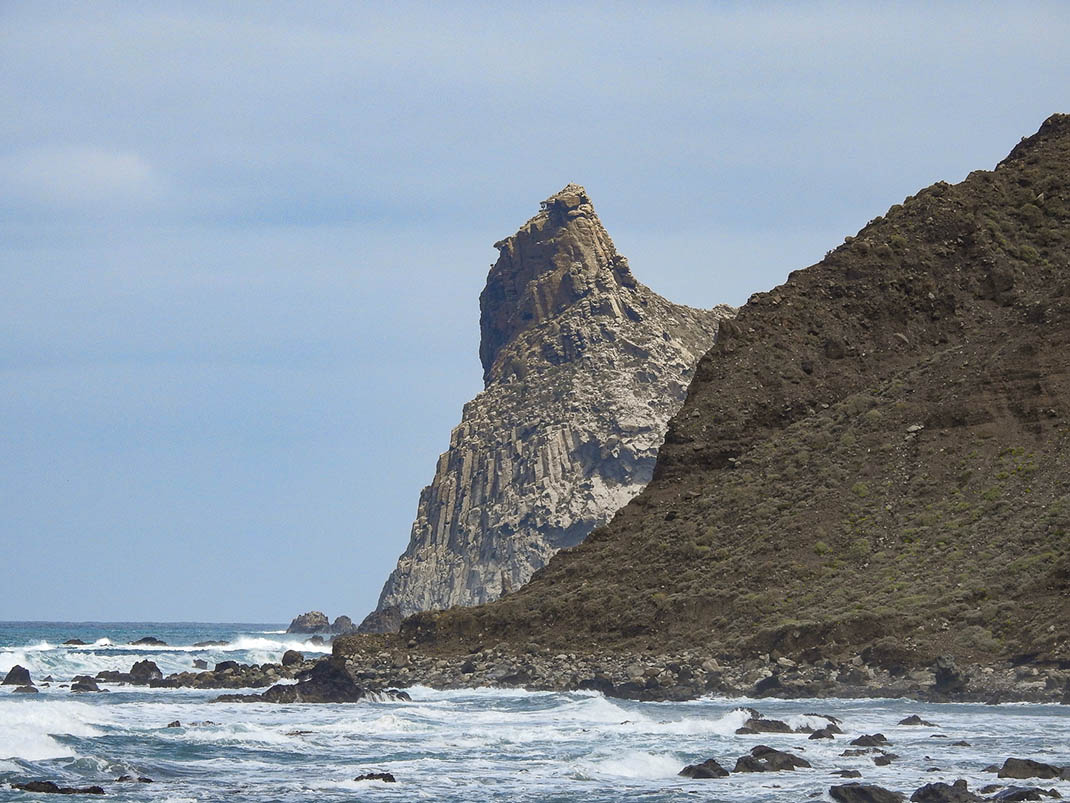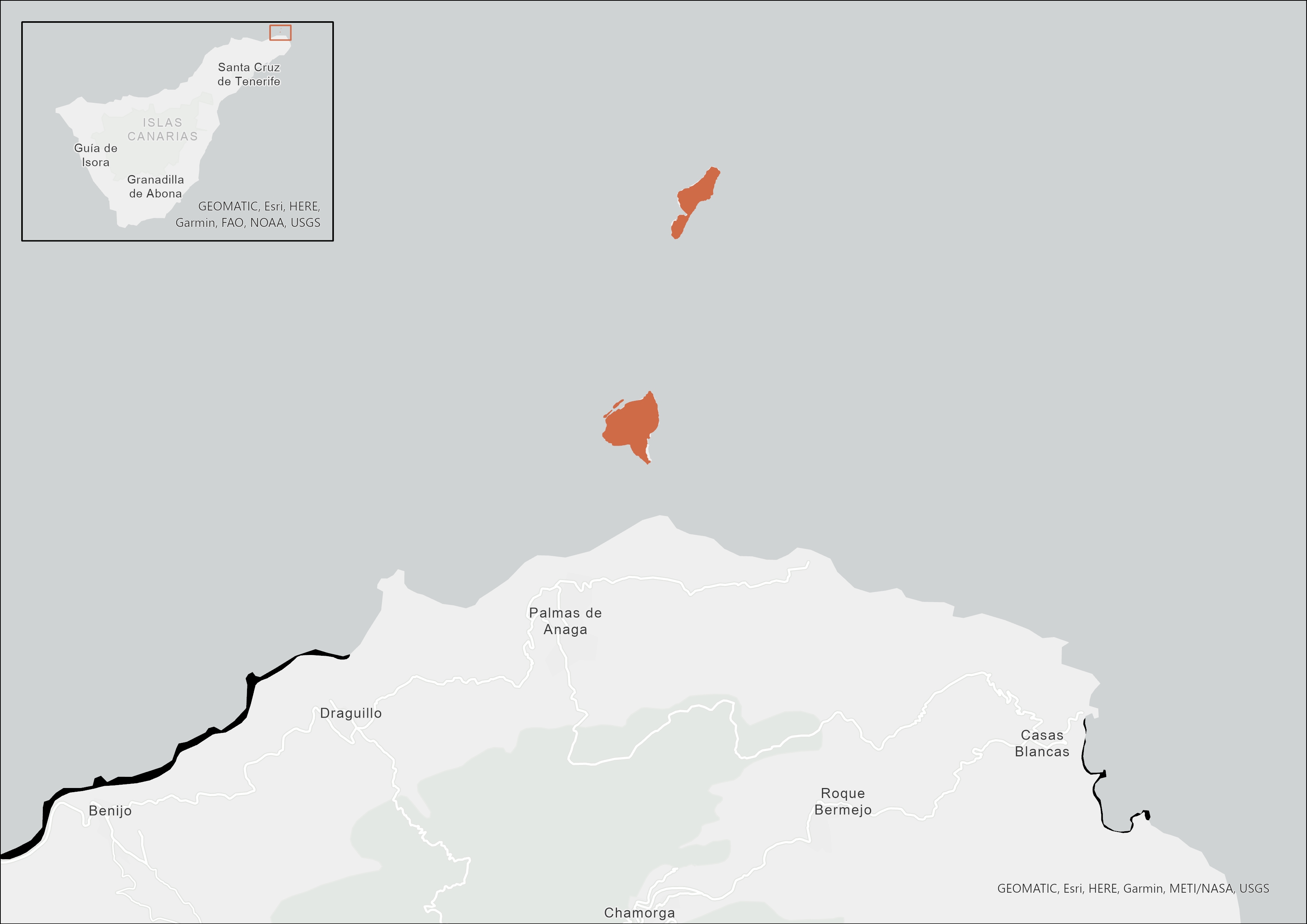Plan your next adventure
Tailor your own route along Tenerife’s trails quickly and easily..
Go to planner
The Roques de Anaga, known as the “Roque de Fuera” (outer rock) and the “Roque de Tierra” (inland rock) make up one of the most emblematic spots in this corner of the island.
Their dominance, and the striking contrast between the blue sea and sky, and the grey rock dotted with vegetation, make it impossible for them to go unnoticed.
In addition to their monumental and scenic value, their isolation has allowed for the development and conservation of many species of birds and flowers, helping to increase the island’s biodiversity.
For this reason, since it was certified a strict nature reserve, accessto this area has been limited exclusively to research purposes.
Recommended time to visit: Not possible to visit.
Geologically speaking, the roques are volcanic plugs, which are the remains of ancient magma vents that became highly compacted as they cooled. Over millions of years, the effects of the sea and wind have gradually revealed these structures.
The Roques de Anaga are thus the remains of the first lava to form the island of Tenerife. Today they sit out at sea due to erosion and the retreating coastline.

The Roque de Tierra has the greatest plant diversity with up to 49 different species, while on the Roque de Fuera there are only 16.
Both rocks are home to dragon trees, cardón (Euphorbia canariensis) and balsam spurge (Euphorbia balsamifera), and share another 11 common plant species.
On the Roque de Tierra the most endangered species are the bejeque de San Andrés (Aeonium volkerii), and in particular, the pico de El Sauzal (Lotus maculatus), which can only be found in one other location.
Standing out among invertebrate fauna is the endemic chuchanga mollusc on the Roque de Fuera. There is also a subspecies of the Gallot’s lizard (Gallotia galloti) on this rock, known as the lagarto del Roque.
The remoteness of the roques has meant that these two species have evolved differently to their relatives on the island.
The roques are also one of the main breeding areas for birds in the Canaries. Among the birds to build their nests here are hundreds of pairs of yellow-legged gulls, Bulwer's petrels, Little shearwaters, Scopoli's shearwaters, Madeiran storm petrels, and even Wilson's storm petrels, whose only breeding ground on Tenerife is the Roque de Fuera.
The plain swift breeds in walls of the roques, while many migratory birds and birds of prey also visit the roques regularly in search of food and rest.

10.0 ha.
Dragon tree, balsam spurge (Euphorbia balsamifera), Phoenician juniper (Juniperus phoenicea), pico de El Sauzal (Lotus maculatus), Gallot’s lizard on the Roque de Fuera, Scopoli's shearwater, little shearwater, Bulwer's petrel, Wilson's storm petrel, and Madeiran storm petrel.
Ravines, coastal cliffs, laurel forest, tabaibal-cardonal, sabinar.
Roque de Tierra, Roque de Fuera.
To consult permits for use and updated regulations for this Protected Natural Area, visit the official website of the Government of the Canary Islands.

Tailor your own route along Tenerife’s trails quickly and easily..
Go to planner